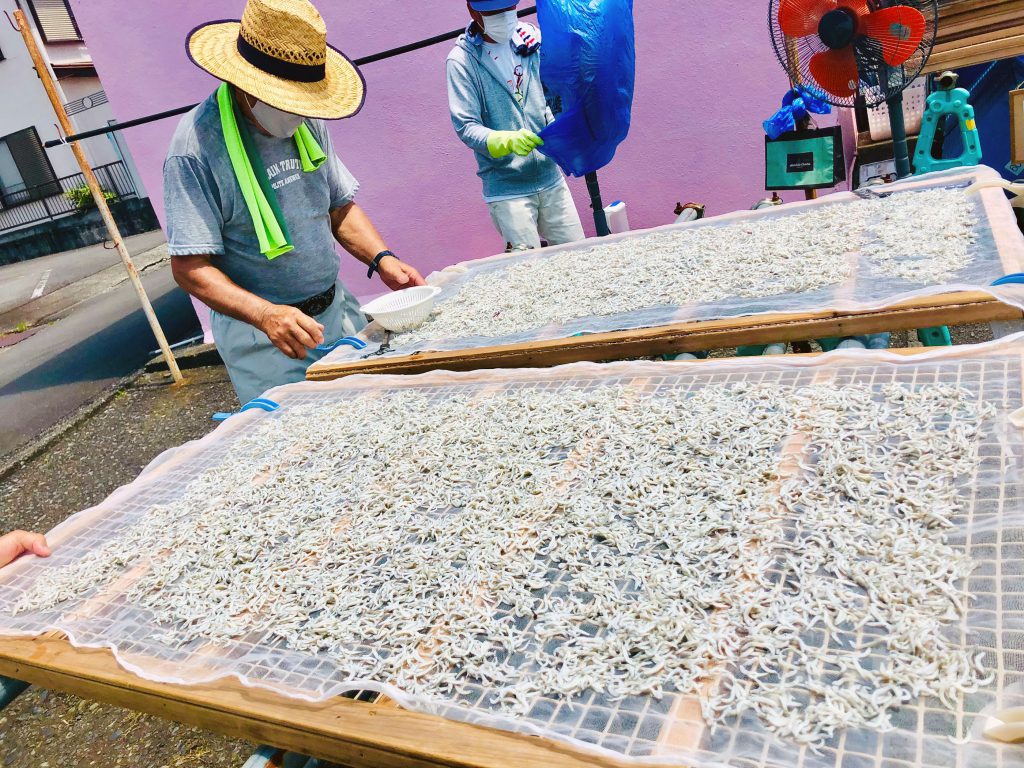
The shirasu that has just been landed this morning is spread on the drying plate and dried in the sun. There is a unique scent of Shirasu, including the scent of the tide. It is a scene unique to a fishing village in midsummer. Shirasu is actually a general term for fry such as sardines, sweetfish, herring, eels, and sand lances, but the ones that are currently dried are the fry of anchovy. Freshly caught “raw shirasu” is really delicious and rarely eaten. At “Road Station” near the fishing village, you can see a bowl of rice topped with “Kamaage Shirasu”, which is made by boiling Shirasu in a large amount of hot water to reduce the water content from 75% to 88%. “Shirasu-boshi” is a product that has been further dried to a moisture content of 65% to 72%, and “Chirimenjako” has a moisture content of 35% to 50%. The name comes from the fact that the appearance of a small shirasu spread flat and dried as shown in the photo looks like a silk fabric with fine wrinkles spread out.
今朝水揚げしたばかりのシラスを干し板いちめんに広げて天日干しです。辺りには潮の香りを含んだシラス独特の香りが漂っています。真夏の漁村ならではの光景です。シラスとは実はイワシ、アユ、ニシン、ウナギ、イカナゴなどの稚魚の総称ですが、今干しているのはカタクチイワシの稚魚です。獲りたての「生シラス」は実に美味しく、滅多に食べることはできません。漁村近くの道の駅などでは、ご飯の上に「釜揚げシラス」を乗せた丼物を見かけますが、これは大量のお湯でシラスを茹でて、水分を75%から88%にしたものです。これをさらに干して水分率を65%から72%にしたものが「シラス干し」、さらに乾燥させて、水分率を35%から50%の水分率にしたものが「チリメンジャコ」です。写真のように小さなシラスを平らに広げて干した様子が、細かなしわをもつ絹織物のちりめんを広げたように見えることからこの名前がつきました。
